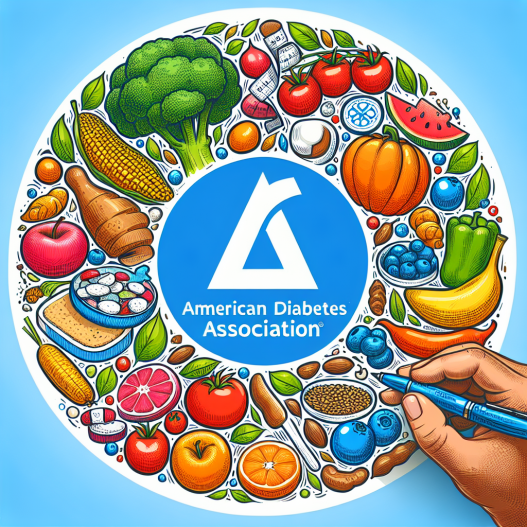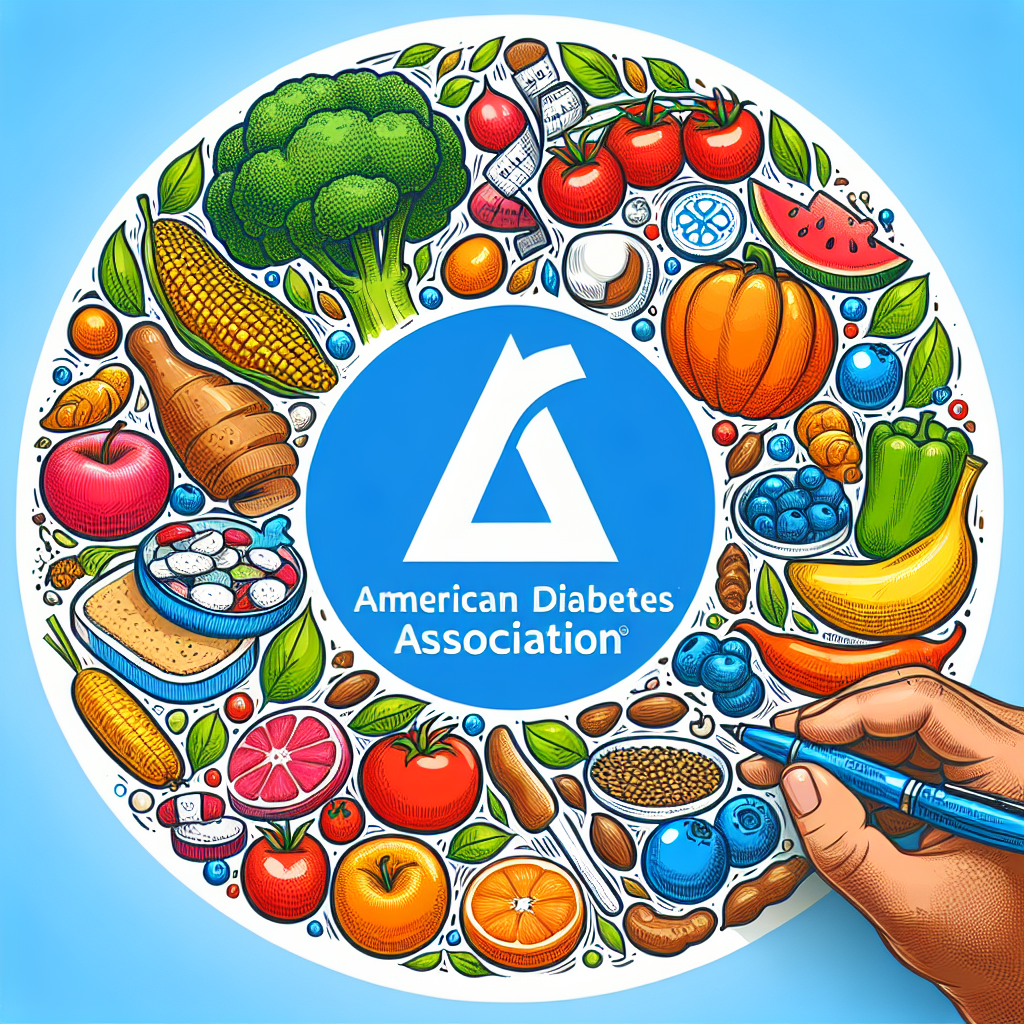[ad_1]
Diabetes management relies heavily on nutrition, making healthy eating not just a recommendation but a necessity. The American Diabetes Association (ADA) provides guidelines aimed at maintaining blood sugar levels and promoting overall wellness. In this blog post, we will explore the ADA’s recommendations for healthy eating for diabetes, focusing on practical tips, food choices, and meal planning strategies that effectively manage the condition while ensuring a balanced diet.
Know Your Carbohydrates: Mastering Carbohydrate Counting
Understanding carbohydrates is critical for anyone managing diabetes. Carbohydrates can significantly impact blood sugar levels, making it essential to not only know how much you’re consuming but also what types you’re including in your diet. The ADA recommends carbohydrate counting as an effective method for managing blood glucose levels.
Carbohydrates are found in a wide range of foods, including grains, fruits, dairy products, and vegetables. It’s important to recognize that not all carbohydrates are created equal. Simple carbohydrates, like those found in sugary snacks and beverages, can cause rapid spikes in blood glucose levels. In contrast, complex carbohydrates, found in whole grains, legumes, and vegetables, take longer to digest, providing a slower and more stable release of glucose into the bloodstream. By focusing on complex carbohydrates and fiber-rich choices, you can help maintain better control over your diabetes.
In addition to knowing the types of carbohydrates, portion sizes are equally important. When managing diabetes, it’s paramount to measure serving sizes and be mindful of any added sugars in foods. Using the plate method—filling half of your plate with non-starchy vegetables, one-quarter with lean protein, and one-quarter with healthy carbohydrates—can help you visualize appropriate portions and balance your meals effectively.
Incorporating Whole Foods: The Staples of a Healthy Diet
Another vital recommendation from the ADA is incorporating whole foods into your diet. Whole foods are minimally processed and free from added sugars, preservatives, and unhealthy fats. They provide essential vitamins, minerals, and fiber that are crucial for overall health, especially when managing diabetes. Foods like vegetables, fruits, nuts, seeds, whole grains, and lean proteins should form the foundation of your diet.
Vegetables, particularly non-starchy types such as leafy greens, broccoli, and peppers, are low in calories and carbohydrates while providing numerous health benefits. They are rich in antioxidants and fiber, which helps to regulate blood sugar levels and promote digestive health. Including a colorful variety of vegetables in your meals can ensure you’re getting a broad range of nutrients essential for managing diabetes.
Additionally, fruits can be a part of a diabetic-friendly diet. While they do contain natural sugars, many fruits are also high in fiber and low in calories—this combination can be beneficial for blood sugar management. Berries, apples, and pears are excellent choices due to their low glycemic index. However, portion control is key, and incorporating fruits as part of a balanced meal can help minimize blood sugar spikes.
Healthy Fats: The Good, The Bad, and The Essential
Fats are an important component of a balanced diet, but not all fats are created equal. The ADA emphasizes the significance of selecting healthy fats while minimizing unhealthy trans and saturated fats that can elevate cholesterol levels and increase the risk of heart disease—an important consideration for people with diabetes.
Monounsaturated and polyunsaturated fats are the healthy options you should focus on, as they can help improve cholesterol levels and reduce the risk of heart disease. Foods rich in these fats include avocados, nuts, seeds, olive oil, and fatty fish such as salmon and mackerel. These sources not only provide health benefits but also help keep you feeling satiated, potentially curbing overeating.
In contrast, it’s essential to limit saturated fats, commonly found in red meat and full-fat dairy products, and eliminate trans fats, often found in processed snacks and baked goods. Reading food labels and being vigilant about the types of fats you consume can play a significant role in maintaining your heart health while managing your diabetes.
Meal Planning Strategies: Stay on Track and Succeed
Effective meal planning is a cornerstone of successful diabetes management. By planning meals in advance, individuals can make healthier food choices, control portions, and maintain consistency with their eating habits. The ADA recommends setting aside time each week to plan meals, which can alleviate stress during busy days and help avoid impulsive choices that may derail dietary goals.
A practical tip for meal planning is to create a weekly menu that includes a variety of food groups. This not only helps ensure a balanced diet but also introduces versatility, preventing boredom with meals. Experimenting with new recipes and cuisines can make healthy eating more enjoyable while still adhering to dietary restrictions.
Additionally, preparing meals in bulk and utilizing leftovers can be both cost-effective and time-saving. Batch-cooking meals and portioning them into containers can provide quick, easy access to healthy options, making it far less likely that you’ll reach for less healthy alternatives.
Understanding the Importance of Regular Mealtimes
Establishing regular meal times can also be beneficial for blood sugar management. Eating at consistent intervals helps regulate insulin sensitivity and glucose levels. The ADA suggests consuming meals and snacks at similar times each day, taking care not to skip meals or snacks, which can lead to fluctuations in blood sugar levels.
When planning meals, consider incorporating healthy snacks into your routine. Small snacks rich in fiber, protein, and healthy fats can maintain energy levels and provide stability in blood sugar throughout the day. Some examples include a handful of nuts, Greek yogurt, or sliced vegetables with hummus.
In addition, be mindful of how your body responds during different times of the day. Some individuals might experience changes in insulin sensitivity based on their activity levels or stress. Staying attuned to your body’s signals can help in making educated choices regarding meal timing and composition.
In summary, healthy eating for diabetes is not only about avoiding certain foods but also about making informed choices that enhance overall health. The American Diabetes Association’s recommendations provide a strong foundation for creating a balanced diet that can facilitate effective diabetes management. By understanding carbohydrates, incorporating whole foods, selecting healthy fats, developing smart meal planning strategies, and establishing regular meal times, individuals can successfully navigate their dietary journey and lead a healthier, more fulfilling life with diabetes.
With knowledge, planning, and commitment, sustainable, healthy eating habits can be developed, making everyday meals a source of nourishment, enjoyment, and empowerment. Whether you are newly diagnosed or have been managing diabetes for years, these guidelines from the ADA serve as a valuable resource in advocating for your health.
Incorporating these practices into daily life can lead to significant improvements in managing diabetes and overall health. The journey might be challenging, but every step toward healthier eating is a step toward better management of the condition.
[ad_2]






















